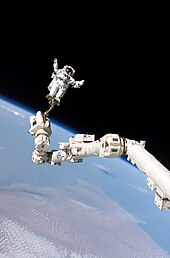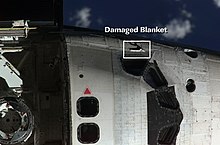
On Saturday, February 1, 2003, Space Shuttle Columbia disintegrated as it reentered the atmosphere over Texas and Louisiana, killing all seven astronauts on board. It was the second Space Shuttle mission to end in disaster, after the loss of Challenger and crew in 1986.

STS-28 was the 30th NASA Space Shuttle mission, the fourth shuttle mission dedicated to United States Department of Defense (DoD) purposes, and the eighth flight of Space Shuttle Columbia. The mission launched on August 8, 1989, and traveled 3,400,000 km (2,100,000 mi) during 81 orbits of the Earth, before landing on runway 17 of Edwards Air Force Base, California, on August 13, 1989. STS-28 was also Columbia's first flight since January 1986, when it had flown STS-61-C, the mission directly preceding the Challenger disaster of STS-51-L. The mission details of STS-28 are classified, but the payload is widely believed to have been the first SDS-2 relay communications satellite. The altitude of the mission was between 295 km (183 mi) and 307 km (191 mi).

STS-112 was an 11-day Space Shuttle mission to the International Space Station (ISS) flown by Space ShuttleAtlantis. Space Shuttle Atlantis was launched on 7 October 2002 at 19:45 UTC from the Kennedy Space Center's launch pad 39B to deliver the 28,000 pound Starboard 1 (S1) truss segment to the Space Station. Ending a 4.5-million-mile journey, Atlantis landed at 15:44 UTC on 18 October 2002 on runway 33 at the Kennedy Space Center's Shuttle Landing Facility.

STS-121 was a 2006 NASA Space Shuttle mission to the International Space Station (ISS) flown by Space ShuttleDiscovery. The main purposes of the mission were to test new safety and repair techniques introduced following the Columbia disaster of February 2003 as well as to deliver supplies, equipment and German European Space Agency (ESA) astronaut Thomas Reiter to the ISS.
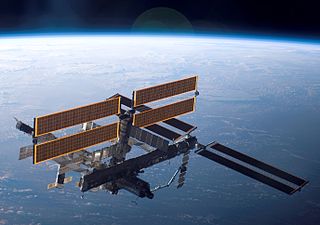
STS-115 was a Space Shuttle mission to the International Space Station (ISS) flown by Space ShuttleAtlantis. It was the first assembly mission to the ISS after the Columbia disaster, following the two successful Return to Flight missions, STS-114 and STS-121. STS-115 launched from LC-39B at the Kennedy Space Center on September 9, 2006, at 11:14:55 EDT.
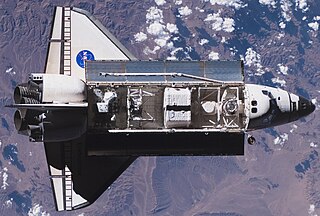
STS-118 was a Space Shuttle mission to the International Space Station (ISS) flown by the orbiter Endeavour. STS-118 lifted off on August 8, 2007, from launch pad 39A at Kennedy Space Center (KSC), Florida and landed at the Shuttle Landing Facility at KSC on August 21, 2007.

STS-119 was a Space Shuttle mission to the International Space Station (ISS) which was flown by Space Shuttle Discovery during March 2009. It delivered and assembled the fourth starboard Integrated Truss Segment (S6), and the fourth set of solar arrays and batteries to the station. The launch took place on March 15, 2009, at 19:43 EDT. Discovery successfully landed on March 28, 2009, at 15:13 pm EDT.

The Space Shuttle thermal protection system (TPS) is the barrier that protected the Space Shuttle Orbiter during the searing 1,650 °C (3,000 °F) heat of atmospheric reentry. A secondary goal was to protect from the heat and cold of space while in orbit.

STS-120 was a Space Shuttle mission to the International Space Station (ISS) that launched on October 23, 2007, from the Kennedy Space Center, Florida. The mission is also referred to as ISS-10A by the ISS program. STS-120 delivered the Harmony module and reconfigured a portion of the station in preparation for future assembly missions. STS-120 was flown by Space ShuttleDiscovery, and was the twenty-third Space Shuttle mission to the ISS.

STS-127 was a NASA Space Shuttle mission to the International Space Station (ISS). It was the twenty-third flight of Space ShuttleEndeavour. The primary purpose of the STS-127 mission was to deliver and install the final two components of the Japanese Experiment Module: the Exposed Facility, and the Exposed Section of the Experiment Logistics Module (ELM-ES). When Endeavour docked with the ISS on this mission in July 2009, it set a record for the most humans in space at the same time in the same vehicle, the first time thirteen people have been at the station at the same time. Together they represented all ISS program partners and tied the general record of thirteen people in space with the first such occurrence of 1995.

STS-133 was the 133rd mission in NASA's Space Shuttle program; during the mission, Space Shuttle Discovery docked with the International Space Station. It was Discovery's 39th and final mission. The mission launched on February 24, 2011, and landed on March 9, 2011. The crew consisted of six American astronauts, all of whom had been on prior spaceflights, headed by Commander Steven Lindsey. The crew joined the long-duration six person crew of Expedition 26, who were already aboard the space station. About a month before lift-off, one of the original crew members, Tim Kopra, was injured in a bicycle accident. He was replaced by Stephen Bowen.

The R-bar pitch maneuver (RPM), popularly called the rendezvous pitch maneuver or backflip, was a maneuver performed by the Space Shuttle as it rendezvoused with the International Space Station (ISS) prior to docking. The Shuttle performed a backflip that exposed its heat-shield to the crew of the ISS that made photographs of it. Based on the information gathered during the rendezvous pitch maneuver, the mission team could decide that the orbiter was not safe for re-entry. They may have then decided either to wait on the ISS for a rescue mission or attempt extra-vehicular activity to repair the heat shield and secure the safe re-entry of the orbiter. This was a standard procedure recommended by CAIB for all space shuttles docking to the International Space Station after a damaged heat shield caused the Columbia disaster.

STS-123 was a Space Shuttle mission to the International Space Station (ISS) which was flown by Space Shuttle Endeavour. STS-123 was the 1J/A ISS assembly mission. The original launch target date was February 14, 2008, but after the delay of STS-122, the shuttle was launched on March 11, 2008. It was the twenty-fifth shuttle mission to visit the ISS, and delivered the first module of the Japanese laboratory, Japanese Experiment Module (Kibō), and the Canadian Special Purpose Dexterous Manipulator, (SPDM) Dextre robotics system to the station. The mission duration was 15 days and 18 hours, and it was the first mission to fully utilize the Station-to-Shuttle Power Transfer System (SSPTS), allowing space station power to augment the shuttle power systems. The mission set a record for a shuttle's longest stay at the ISS.

STS-124 was a Space Shuttle mission, flown by Space Shuttle Discovery to the International Space Station. Discovery launched on May 31, 2008, at 17:02 EDT, moved from an earlier scheduled launch date of May 25, 2008, and landed safely at the Kennedy Space Center's Shuttle Landing Facility, at 11:15 EDT on June 14, 2008. Its objective was to deliver the largest module of the space station – Kibō, the Japanese Experiment Module pressurized section. The mission is also referred to as ISS-1J by the ISS program.
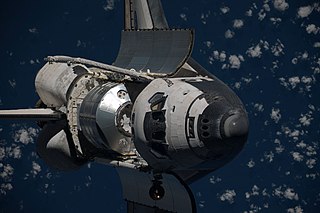
STS-128 was a NASA Space Shuttle mission to the International Space Station (ISS) that launched on August 28, 2009. Space ShuttleDiscovery carried the Multi-Purpose Logistics Module Leonardo as its primary payload. Leonardo contained a collection of experiments for studying the physics and chemistry of microgravity. Three spacewalks were carried out during the mission, which removed and replaced a materials processing experiment outside ESA's Columbus module, and returned an empty ammonia tank assembly.

STS-131 was a NASA Space Shuttle mission to the International Space Station (ISS). Space ShuttleDiscovery launched on April 5, 2010, at 6:21 am from LC-39A, and landed at 9:08 am on April 20, 2010, on runway 33 at the Kennedy Space Center's Shuttle Landing Facility. The mission marked the longest flight for Space Shuttle Discovery.

STS-132 was a NASA Space Shuttle mission, during which Space Shuttle Atlantis docked with the International Space Station on May 16, 2010. STS-132 was launched from the Kennedy Space Center on May 14, 2010. The primary payload was the Russian Rassvet Mini-Research Module, along with an Integrated Cargo Carrier-Vertical Light Deployable (ICC-VLD). Atlantis landed at the Kennedy Space Center on May 26, 2010.
This is the timeline for STS-121, the mission to the ISS.
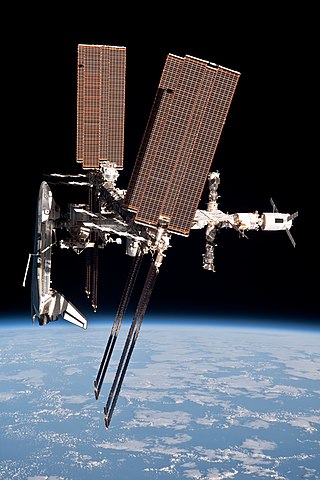
STS-134 was the penultimate mission of NASA's Space Shuttle program and the 25th and last spaceflight of Space ShuttleEndeavour. This flight delivered the Alpha Magnetic Spectrometer and an ExPRESS Logistics Carrier to the International Space Station. Mark Kelly served as the mission commander. STS-134 was expected to be the final Space Shuttle mission if STS-135 did not receive funding from Congress. However, in February 2011, NASA stated that STS-135 would fly "regardless" of the funding situation. STS-135, flown by Atlantis, took advantage of the processing for STS-335, the Launch on Need mission that would have been necessary if the STS-134 crew became stranded in orbit.

STS-135 was the 135th and final mission of the American Space Shuttle program. It used the orbiter Atlantis and hardware originally processed for the STS-335 contingency mission, which was not flown. STS-135 launched on July 8, 2011, and landed on July 21, 2011, following a one-day mission extension. The four-person crew was the smallest of any shuttle mission since STS-6 in April 1983. The mission's primary cargo was the Multi-Purpose Logistics Module (MPLM) Raffaello and a Lightweight Multi-Purpose Carrier (LMC), which were delivered to the International Space Station (ISS). The flight of Raffaello marked the only time that Atlantis carried an MPLM.








